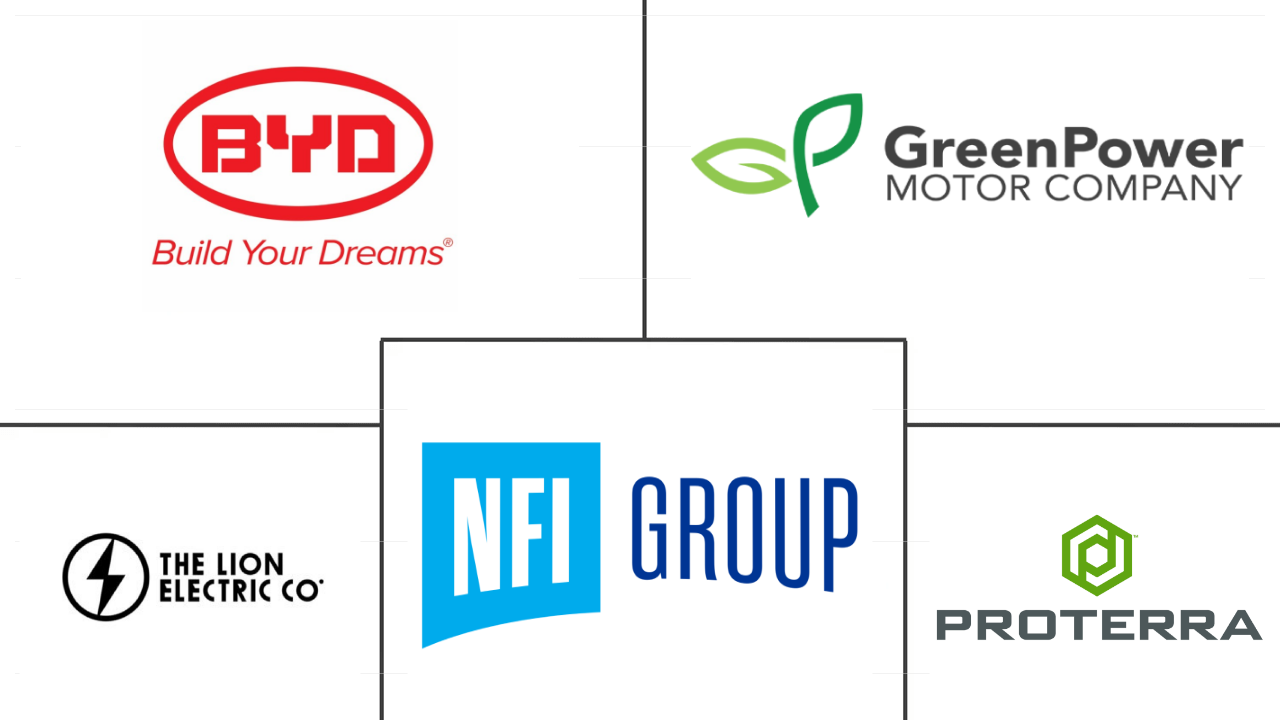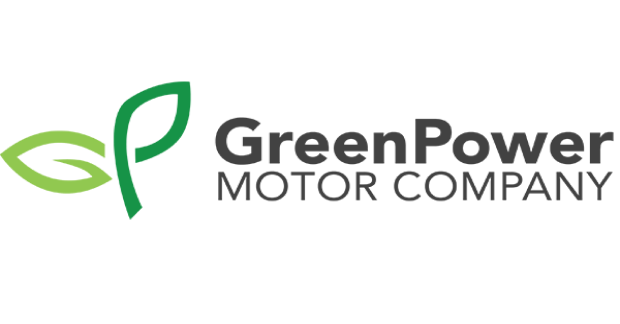Market Size of united states electric bus Industry
|
|
Study Period | 2017 - 2030 |
|
|
Market Size (2024) | USD 338.6 Million |
|
|
Market Size (2030) | USD 938.5 Million |
|
|
Largest Share by Fuel Category | HEV |
|
|
CAGR (2024 - 2030) | 18.52 % |
|
|
Fastest Growing by Fuel Category | FCEV |
Major Players |
||

|
||
|
*Disclaimer: Major Players sorted in no particular order |
United States Electric Bus Market Analysis
The United States Electric Bus Market size is estimated at 338.6 million USD in 2024, and is expected to reach 938.5 million USD by 2030, growing at a CAGR of 18.52% during the forecast period (2024-2030).
338.6 Million
Market Size in 2024 (USD)
938.5 Million
Market Size in 2030 (USD)
8.98 %
CAGR (2017-2023)
18.52 %
CAGR (2024-2030)
Largest Segment by Fuel Category
51.47 %
value share, HEV, 2023
HEVs are the largest segment due to their fuel efficiency, lower emissions compared to traditional gasoline vehicles, and the ability to switch between electric and combustion engines.
Fastest-growing Segment by Fuel Category
23.95 %
Projected CAGR, FCEV, 2024-2030
FCEVs are the fastest-growing segment due to rapid advancements in hydrogen technology, increasing investments in hydrogen fueling infrastructure, and the global push towards zero-emission vehicles.
Leading Market Player
25.60 %
market share, Proterra INC., 2023

Proterra INC. leads the market with its advanced battery technology, high-performance electric buses, and strong relationships with transit authorities committed to reducing emissions.
Second leading Market Player
16.90 %
market share, GreenPower Motor Company Inc., 2023

GreenPower Motor Company Inc. is a major player due to its innovative electric bus designs, commitment to sustainability, and strong partnerships with transit agencies across the United States.
Third Leading Market Player
15.10 %
market share, NFI Group Inc., 2023

NFI Group Inc. is the fastest-growing player due to its diverse electric bus portfolio, extensive manufacturing capabilities, and strategic expansions in key urban markets focused on ZET.
The US electric bus market is set to rise, with 6,051 units expected by 2030, driven by tech advancements and sustainable urban transit shift
- FTA offers a number of grant programs, many of which have been used to purchase electric buses. In 2018, the Low or No Emission Grant program awarded grants to over 50 state and local governments, totaling USD 85 million. Additionally, in 2018, FTA announced that it had awarded USD 264 million in grants to 139 projects under its Buses and Bus Facilities Infrastructure Investment Program. These programs, along with the DOT’s Congestion Mitigation and Air Quality Improvement Program and State of Good Repair Program, are grant programs that state and local governments apply for on an annual basis. Other federal grant programs include the School Bus Rebate Program, Urbanized Area Formula Funding Program, and BUILD Discretionary Grant Program.
- According to estimates, the US electric bus industry brought in USD 490.6 million in revenue in 2021 at a CAGR of 31.4% from 2021 to 2028. Environmental benefits, stricter emission-reduction regulations, the availability of local, state, federal funding for zero-emission buses, long-term economic benefits to transit agencies, declining battery costs, and increased operational efficiencies are the main driving forces behind the market's expansion.
- In the United States, the EPA and NHTSA proposed the implementation of the Safer Affordable Fuel-Efficient (SAFE) Vehicles rule to be effective from 2021 to 2028. The rule may set corporate average fuel economy standards and greenhouse gas emissions for passenger and commercial vehicles. The Zero-Emission Vehicles (ZEV) Program requires OEMs to sell specific numbers of clean and zero-emission vehicles (electric, hybrid, and fuel cell-powered commercial and passenger vehicles). The ZEV plan aims to put 12 million ZEVs on the road in the country by 2030.
United States Electric Bus Industry Segmentation
BEV, FCEV, HEV are covered as segments by Fuel Category.
- FTA offers a number of grant programs, many of which have been used to purchase electric buses. In 2018, the Low or No Emission Grant program awarded grants to over 50 state and local governments, totaling USD 85 million. Additionally, in 2018, FTA announced that it had awarded USD 264 million in grants to 139 projects under its Buses and Bus Facilities Infrastructure Investment Program. These programs, along with the DOT’s Congestion Mitigation and Air Quality Improvement Program and State of Good Repair Program, are grant programs that state and local governments apply for on an annual basis. Other federal grant programs include the School Bus Rebate Program, Urbanized Area Formula Funding Program, and BUILD Discretionary Grant Program.
- According to estimates, the US electric bus industry brought in USD 490.6 million in revenue in 2021 at a CAGR of 31.4% from 2021 to 2028. Environmental benefits, stricter emission-reduction regulations, the availability of local, state, federal funding for zero-emission buses, long-term economic benefits to transit agencies, declining battery costs, and increased operational efficiencies are the main driving forces behind the market's expansion.
- In the United States, the EPA and NHTSA proposed the implementation of the Safer Affordable Fuel-Efficient (SAFE) Vehicles rule to be effective from 2021 to 2028. The rule may set corporate average fuel economy standards and greenhouse gas emissions for passenger and commercial vehicles. The Zero-Emission Vehicles (ZEV) Program requires OEMs to sell specific numbers of clean and zero-emission vehicles (electric, hybrid, and fuel cell-powered commercial and passenger vehicles). The ZEV plan aims to put 12 million ZEVs on the road in the country by 2030.
| Fuel Category | |
| BEV | |
| FCEV | |
| HEV |
United States Electric Bus Market Size Summary
The United States Electric Bus Market is experiencing robust growth, driven by a combination of environmental awareness, regulatory frameworks, and financial incentives. The market is supported by various federal grant programs such as the Low or No Emission Grant program and the School Bus Rebate Program, which have facilitated the acquisition of electric buses by state and local governments. These initiatives, alongside the DOT’s Congestion Mitigation and Air Quality Improvement Program, are pivotal in promoting the adoption of zero-emission vehicles. The market's expansion is further bolstered by declining battery costs and increased operational efficiencies, making electric buses a viable and sustainable option for public transportation. The implementation of the Zero-Emission Vehicles (ZEV) Program and the Safer Affordable Fuel-Efficient (SAFE) Vehicles rule underscores the government's commitment to reducing carbon emissions and enhancing air quality, thereby fostering a conducive environment for the electric bus market's growth.
The market landscape is characterized by a high level of consolidation, with major players like BYD Auto Co. Ltd., GreenPower Motor Company Inc., Lion Electric Company, NFI Group Inc., and Proterra INC. dominating the sector. These companies are actively expanding their operations and product offerings to meet the surging demand for electric buses. The market's growth trajectory is further supported by strategic governmental initiatives, such as President Biden's plan to accelerate domestic battery manufacturing, which aims to transition gas-powered vehicles to electric ones. This push is expected to significantly enhance electric mobility in the United States, particularly between 2024 and 2030. The market's development is also reflected in recent industry activities, such as Proterra's announcement of a new EV battery factory in South Carolina and BYD's partnership with the Los Olivos Elementary School District to establish a 100% zero-emission fleet of school buses, highlighting the ongoing efforts to promote sustainable transportation solutions.
United States Electric Bus Market Size - Table of Contents
-
1. MARKET SEGMENTATION (includes market size in Value in USD and Volume, Forecasts up to 2030 and analysis of growth prospects)
-
1.1 Fuel Category
-
1.1.1 BEV
-
1.1.2 FCEV
-
1.1.3 HEV
-
-
United States Electric Bus Market Size FAQs
How big is the United States Electric Bus Market?
The United States Electric Bus Market size is expected to reach USD 338.56 million in 2024 and grow at a CAGR of 18.52% to reach USD 938.54 million by 2030.
What is the current United States Electric Bus Market size?
In 2024, the United States Electric Bus Market size is expected to reach USD 338.56 million.

